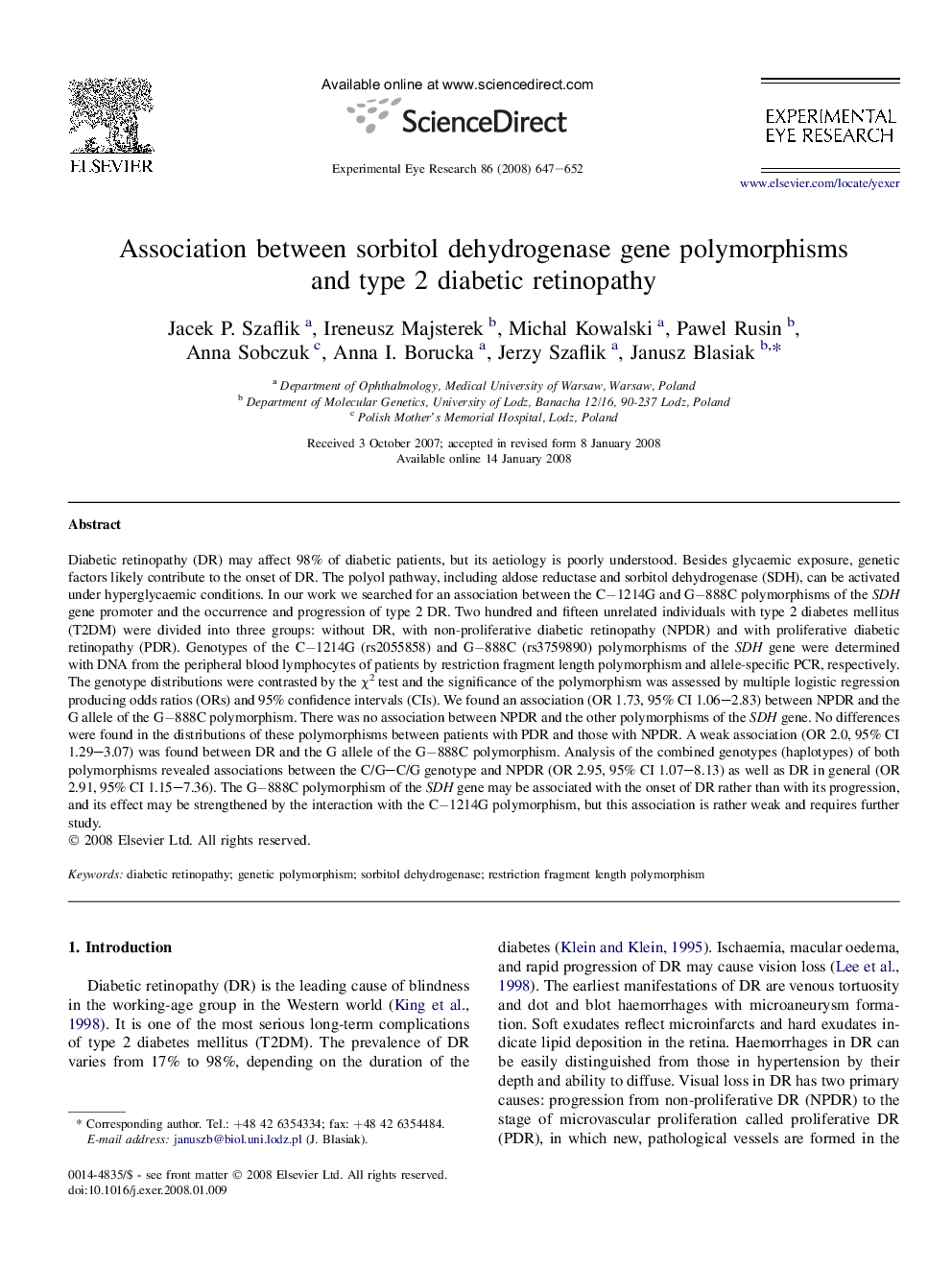| Article ID | Journal | Published Year | Pages | File Type |
|---|---|---|---|---|
| 6197599 | Experimental Eye Research | 2008 | 6 Pages |
Diabetic retinopathy (DR) may affect 98% of diabetic patients, but its aetiology is poorly understood. Besides glycaemic exposure, genetic factors likely contribute to the onset of DR. The polyol pathway, including aldose reductase and sorbitol dehydrogenase (SDH), can be activated under hyperglycaemic conditions. In our work we searched for an association between the Câ1214G and Gâ888C polymorphisms of the SDH gene promoter and the occurrence and progression of type 2 DR. Two hundred and fifteen unrelated individuals with type 2 diabetes mellitus (T2DM) were divided into three groups: without DR, with non-proliferative diabetic retinopathy (NPDR) and with proliferative diabetic retinopathy (PDR). Genotypes of the Câ1214G (rs2055858) and Gâ888C (rs3759890) polymorphisms of the SDH gene were determined with DNA from the peripheral blood lymphocytes of patients by restriction fragment length polymorphism and allele-specific PCR, respectively. The genotype distributions were contrasted by the Ï2 test and the significance of the polymorphism was assessed by multiple logistic regression producing odds ratios (ORs) and 95% confidence intervals (CIs). We found an association (OR 1.73, 95% CI 1.06-2.83) between NPDR and the G allele of the Gâ888C polymorphism. There was no association between NPDR and the other polymorphisms of the SDH gene. No differences were found in the distributions of these polymorphisms between patients with PDR and those with NPDR. A weak association (OR 2.0, 95% CI 1.29-3.07) was found between DR and the G allele of the Gâ888C polymorphism. Analysis of the combined genotypes (haplotypes) of both polymorphisms revealed associations between the C/G-C/G genotype and NPDR (OR 2.95, 95% CI 1.07-8.13) as well as DR in general (OR 2.91, 95% CI 1.15-7.36). The Gâ888C polymorphism of the SDH gene may be associated with the onset of DR rather than with its progression, and its effect may be strengthened by the interaction with the Câ1214G polymorphism, but this association is rather weak and requires further study.
